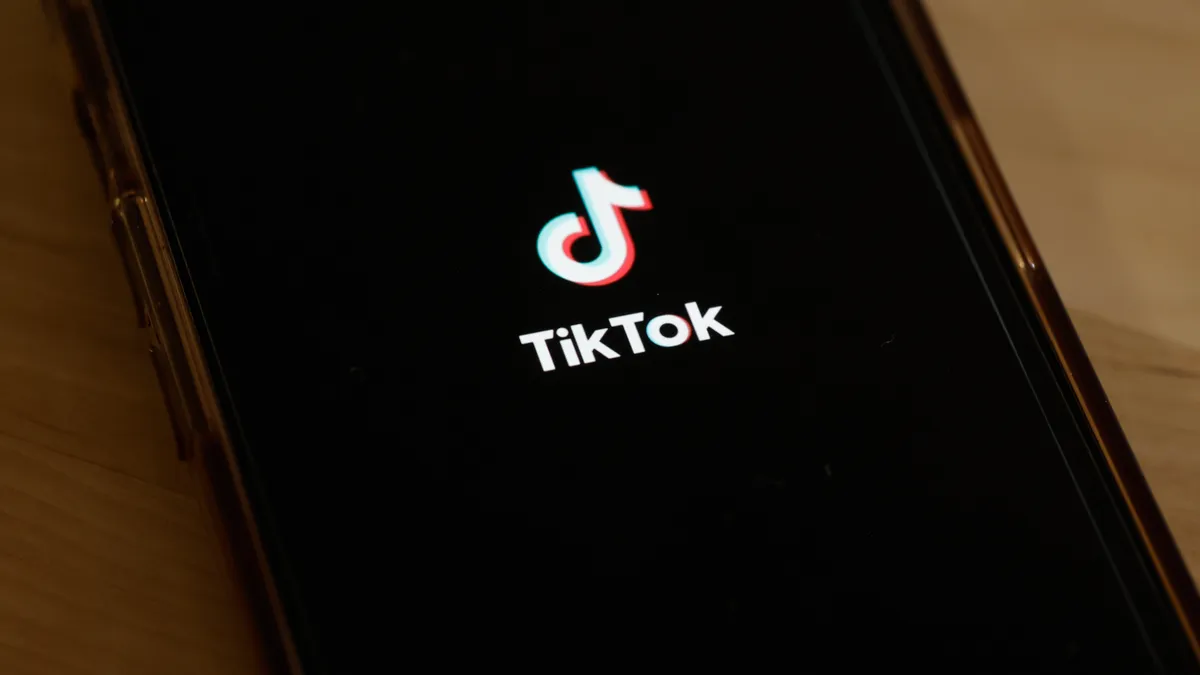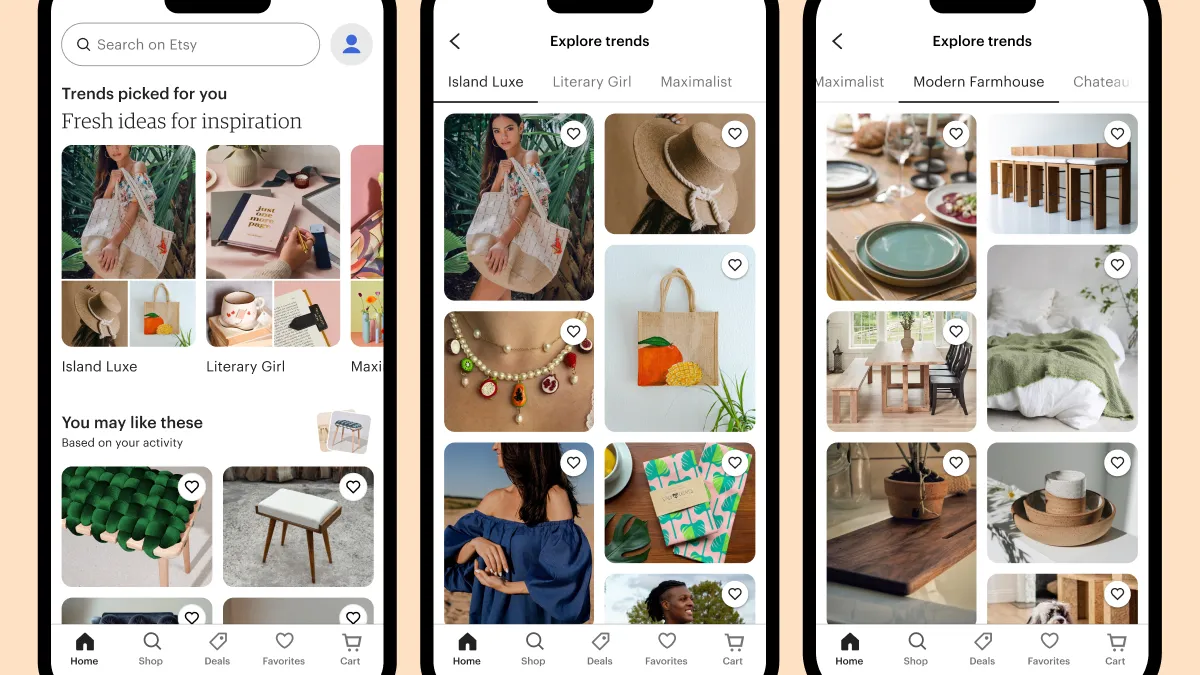Each week, Retail Dive Editor Jason Ankeny weighs in on the industry headlines and trends capturing his attention. This time around: Technology, tuxedos and trouble. If you want more, check out last week's 10 Items or Less on how sluggish mobile apps are killing retailers in a matter of seconds.
“Prediction is very difficult, especially about the future,” proclaimed the pioneering Danish physicist Niels Bohr — a quote admittedly more apropos from the mouth of baseball philosopher Yogi Berra. But the challenge never seems to deter forecasters from peering into the proverbial crystal ball to figure out what’s coming next. Private-label credit card provider Synchrony Financial is looking especially far ahead with its new report Future of Retail: Insight and Influences Shaping Retail Innovation, which examines the consumer perspectives and shopping trends expected to transform the industry by the year 2030.
Spoiler alert: Brick and mortar will remain a major force in retail’s future, but regardless of how consumers travel to their preferred shopping destination — whether via self-driving cars, jetpacks or teleportation tubes — the in-store experience that awaits them will be dramatically different from the present paradigm. Synchrony anticipates a brave new world of self-serve, do-it-yourself shopping technologies that radically upend how consumers access, select and pay for goods, complete with everything from robot-assisted drive-thru windows to interactive touchscreen mirrors, which was cited as one of the top three most exciting innovations of the future by 47% of consumers.
“Everything will be around convenience and time. Technology’s going to drive all that,” Whit Goodrich, chief marketing officer of Synchrony’s Retail Card unit, told me during a briefing at last week’s Shoptalk 2017 conference in Las Vegas. “If you look at retailers and their prototype stores, they’re trying to take the associate out of the front end, and they’re trying to take the cash wrap out of the front end. They want everything to be self-service, scan-and-go, pay-right-in-the-app. Obviously there are huge labor cost implications. Also, I think stores are going to become 24/7. It’s going to be driven by convenience to the consumer — what works around their schedule. [Retailers] already have the expense locked up in that real estate. Why not maximize it?”
Consumers in 2030 will expect retailers to leverage personal information (data they willingly hand over, no less) to deliver more customized products and offers. Look for RFID in smartphones, wearables and biometrics — e.g., finger and palm scanners — to help build detailed customer profiles used to steer shippers to preferred in-store items, complete with real-time, individualized sales offers.
Partners like Synchrony will play a significant role here as well, Goodrich says. “Think about being in your office, knowing you’re going to stop by Retailer A on your way home,” he explained. “You’re browsing [the retailer’s website] for what you want. They already know all about you, and they’re personalizing offers for you right there on the web. You pick some things. You think, ‘Wow, what a great offer if I open a credit card account.’ You start [the account application], but then you’ve gotta head out to get on the road. You stop off at a coffee shop on your way home, you pull up [the credit application] on your mobile app, and you finish it right in stride from where you left off in the office. Ultimately you walk into the retailer on your way home, you’ve got an approved account on your phone, with a personalized offer you got on the desktop. That’s where everything’s got to evolve to.”
The future of brick and mortar isn’t solely tech-driven, however. Synchrony envisions a world increasingly dependent on in-store engagement and entertainment, with 55% of study participants expressing excitement for features like coffee shops, cafés, music and bars, not to mention complimentary samplings of products or services. At the same time, consumers contend that retailers must pare down to the essentials: 57% of respondents told Synchrony that merchants must streamline and focus on doing one or two things well and “not try to be everything to everyone” as one-stop-shopping models give way to online and automated reordering options.
In other words, the future isn’t so different from the present. “Nobody’s going to go to the store for commoditized products anymore. [It’s happening already and] it’s only going to get worse,” Goodrich said. “It comes down to products that are truly unique and experiential and touchy-feely, and how you optimize that experience. For things that are commoditized, it’s about how you take costs out and deliver them in a really simple, efficient way to the consumer.”
Here’s what else is worth your time and attention this week…
TRENDING UP
Formal announcement: Nordstrom is planning six showrooms in partnership with tuxedo rental startup The Black Tux, beginning with a store in Mission Viejo, CA, and expanding later this year to locations in Atlanta, Boston, Denver, Orange County, CA, Seattle and Washington, D.C.
Local flavor: Google continues to expand its Assistant artificial intelligence platform, announcing that consumers may soon query Google Home interactive speakers to determine local product availability, receiving responses complete with details like sizes and price as well as store hours and travel directions.
Room with a view: Williams-Sonoma announced its first augmented reality application, “3D Room View” by Pottery Barn, which leverages Google’s Tango sensors and computer vision software to enable AR experiences via smartphone.
TRENDING DOWN
Trouble afoot: Discount shoe retailer Payless Inc. is preparing to file for Chapter 11 bankruptcy protection and considering the closure of 400 to 500 stores, a number in line with plans announced last year as part of a new strategy emphasizing big box stores over mall locations.
Crew cut: Moody’s Investor Service downgraded J. Crew parent Chinos Intermediate Holdings in light of the company’s proposed debt exchanges, adding that “meaningful earnings recovery would require bringing customers back to generate positive same store sales, which has proved elusive.”
Game over: GameStop will close between 2% to 3% of its global store footprint — at least 150 stores — in the coming months. However, the gaming retailer also anticipates opening 35 new Collectibles stores and 65 Technology Brand stores worldwide.
STAT OF THE WEEK
32: The number of under-performing stores that outdoor apparel retailer Gander Mountain will liquidate as it pursues a going-concern sale of its remaining assets.
PARTING SHOT
“The future of retail is digital, but people will also be shopping in stores for a long, long time. Consumers want us to pull the swim lanes out altogether. To them, it’s all the same pool. People will shop the way they want. Our job is to be agile, offer rich experiences and let [customers] own it on their own terms. If we don’t, someone else will.” — Target Chairman and CEO Brian Cornell




















